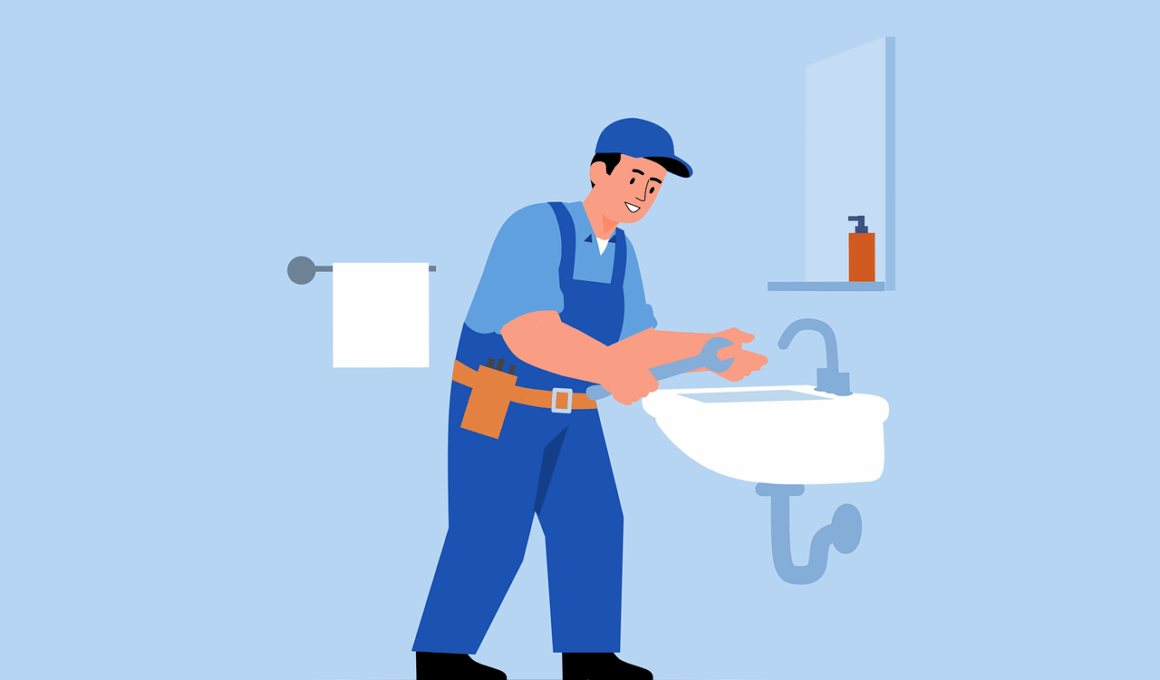How to Budget for Home Maintenance and Repairs
Managing a household budget effectively entails adequately planning for various expenses, including home maintenance and repairs. Many homeowners overlook these costs, which can lead to financial strain when unexpected repairs arise. The first step is to conduct a thorough assessment of your home to identify potential maintenance needs. Consider areas that require regular upkeep, such as plumbing, roofing, and appliances. This assessment will help you establish a foundational understanding of what your home may need over time. Allocate a specific percentage of your income for maintenance; a common recommendation is to set aside about 1% to 3% of your home’s value annually. Keep in mind, regional factors, along with home age, greatly influence maintenance needs. Factor in these considerations to avoid future surprises. Regularly check your budget to adapt as necessary; repairs may arise more often than expected. Furthermore, explore cost-effective methods for completing maintenance tasks, including DIY options and local service providers.Staying proactive with your budget planning ensures your home remains in good condition, ultimately protecting your investment.
The next crucial aspect is creating a detailed maintenance schedule. A schedule helps you plan both seasonal tasks and annual inspections, ensuring nothing is missed. Begin by listing essential tasks, such as gutter cleaning, HVAC servicing, and exterior painting. By organizing this information, you can prioritize tasks and allocate sufficient funds for each one. Consider factoring in the cost of materials, tools, and any professional help you may require when estimating expenses. Additionally, remember to review past maintenance and repair records, if available, to identify patterns in your home’s needs. This historical data can provide insights into the frequency of repairs and help you make more accurate predictions for future budgeting. Keep an eye on local seasonal trends, as they can affect maintenance needs. For instance, ice and snow will require different preparations than hot, rainy summers. A well-organized schedule protects your home and enables you to budget more effectively. Moreover, make adjustments based on your home’s age and condition, making older homes could necessitate more frequent maintenance. Adaptability remains key.
Prioritizing Repairs
When dealing with home maintenance, not all repairs carry the same urgency. It’s essential to differentiate between necessary repairs and those that can wait. Start this assessment by categorizing potential repairs based on their importance. Immediate repairs include those that impact safety, structural integrity, or essential living conditions. Examples include broken plumbing systems, leaky roofs, and electrical issues. Addressing these urgent situations first can prevent more significant problems and expenses down the line. Then, consider less urgent repairs that affect aesthetics or convenience, such as interior painting or landscaping. Create a timeline for each category of repairs, and adjust your budget and savings plan accordingly. For urgent repairs, try to keep a small emergency fund set aside within your budget. This fund acts as a safety net while enabling you to manage unexpected costs. Additionally, consider potential opportunities for bundling services when looking for maintenance assistance. This often translates into savings by allowing professionals to complete multiple tasks during a single visit.
Another useful strategy is to seek various financing options for larger repairs. Utilizing credit responsibly can alleviate immediate financial burdens, allowing you to manage unexpected expenses without emptying savings. However, prioritize options that come with low interest rates to avoid increasing overall costs significantly. Research local programs or government assistance that might offer financial support for homeowners. For substantial repairs, organizing and obtaining estimates from multiple contractors can help identify the best option. Requesting multiple quotes allows you to compare prices and services, making a well-informed decision. As you research, pay attention to local reviews and ratings, as previous customer experiences often provide valuable insights. Before finalizing any agreements, clarify the payment terms to ensure there are no surprises post-service. Remaining informed and proactive regarding financing keeps your repair costs manageable without undue stress. Always communicate openly with contractors and ensure service agreements align with your budgetary constraints.
Maintaining Adequate Savings
Building a robust savings account dedicated to home maintenance and repairs holds significant benefits. This dedicated fund assists with managing costs more seamlessly while preventing financial strain. The ideal savings goal typically aligns with the previously discussed percentage of home value. For instance, if your home is valued at $300,000, aiming for a savings target of $3,000 to $9,000 annually proves wise. Automating your savings through monthly transfers into this account can foster consistency. Automating ensures funds remain allocated before you’re tempted to spend it elsewhere. Choosing a high-yield savings account or similar investment mechanisms can help your emergency fund grow, allowing you to reach financial targets faster. Consider setting milestones for your savings, such as reaching 25% of your goal within a certain timeframe. These targets can motivate you to stay on track, providing a sense of accomplishment when achieved. Additionally, review your savings plan regularly to accommodate changes that may arise in either repair needs or personal finances. Proactive savings enable homeowners to navigate repairs and maintenance smoothly.
Home maintenance budgeting also requires diligent tracking of expenditures. Maintain a detailed record of maintenance-related expenses; this transparency reveals where your budget stands at any moment. Utilize budgeting software or apps for convenient tracking, which helps categorize expenses by type. Additionally, review your spending history periodically to identify trends or potential areas for adjustments. For instance, if you notice frequent rising costs for particular services, it may be beneficial to explore alternative service providers or preventative measures. Keeping a spending history can also assist in future budgeting decisions. Furthermore, categorizing and analyzing expenses can aid in identifying areas where savings can occur. For instance, if a specific maintenance task consistently requires a significant budget portion, consider investing in materials and learning skills for future projects. This proactive approach ultimately allows you to save on potential costs while enhancing your home’s value. Consistent tracking supports accountability in your budgeting efforts, enabling better decision-making when approaching maintenance responsibilities. Tracking can lead to decreased stress surrounding financial obligations, resulting in a healthier home environment.
Understanding Insurance Options
Your homeowner’s insurance policy plays a critical role in budgeting for maintenance and repairs. Having a thorough understanding of your policy can help you identify which repairs are covered and which expenses may come from your pocket. Review your policy carefully, focusing on the coverage for specific repairs like water damage or fire-related issues. Generally, routine maintenance or neglect isn’t covered, so being conscious of your responsibilities remains vital. It may also be beneficial to consult your insurance agent to clarify any doubts or uncertainties regarding coverage. Additionally, consider potential upgrades to your policy that could enhance benefits. Sometimes, bundling your home and auto insurance can unlock discounts, providing additional savings opportunities. For larger projects or repairs, determine if upfront payment offers additional benefits, such as avoiding higher premiums or out-of-pocket costs later. Above all, keeping an open channel of communication with your insurance provider remains crucial for understanding your responsibilities better. Awareness of how your insurance options interface with your maintenance and repair budgeting helps maintain your home while ensuring financial stability.
Lastly, cultivating relationships with reputable service providers can significantly improve your home maintenance experience. Building connections with reliable contractors allows for easier communication and potentially better pricing when repairs arise. Trustworthy professionals may offer maintenance plans or discounts for loyal customers. As you search for contractors, consider reaching out to friends, family, and neighbors to ask for recommendations. Furthermore, leveraging online resources can provide additional insights into providers’ reputations. Reading reviews and testimonials helps highlight the quality of their work and reliability. Once you’ve established a shortlist, interview several candidates, obtaining estimates and assessing responsiveness. Building a network of trusted service providers can streamline the repair process, ensuring timely assistance and potentially saving long-term costs by securing loyalty rewards. Additionally, don’t hesitate to ask for references from previous clients, as past experiences often indicate what to expect. Lastly, ensure you receive written estimates and service agreements, solidifying communication about your expectations. A commitment to cultivating reliable professional relationships is vital for managing your home’s maintenance effectively. With the right planning, budgeting, and professionals in place, home maintenance becomes far more manageable.


